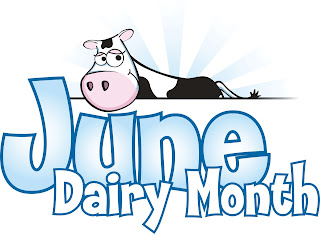I'm taking you on a journey from A to Z through the land of dairy!
There's no need to pack your bags, just come along!
A Is For Acre
The bulk of our acreage, about 110 acres, is planted into corn. Some is planted and later picked to feed as corn mixed with other grains. The stalks are then baled to use as bedding. (Learn more at Time To Change The Sheets). The remaining corn is chopped in the fall for silage to feed to the cows. (Learn more at 120 Hungry Mouths To Feed).
 |
| The beginning of our corn crop |
Nearly 60 acres of our cropland is planted into grains, primarily oats. The oat kernel is fed, while the plant stalk is baled for bedding. This is called straw. Since the weather forced us to start a late planting season, we have chosen to plant barley and peas as well. These plants have a shorter growing season and still provide our animals with the nutrients they need. (Learn more at Hey, Where's The Hay?)
Finally, about 100 acres of our cropland is alfalfa hay. We feed a lot of hay, since every animal on our farm is treated to hay each day. Usually we would be baling hay at this time, but not this year. We are still experiencing almost daily rains here in our part of Minnesota. Hay must be cut and dried before it can be made into bales and with this wet weather, it just isn't happening. Instead we cut the hay, which is blown into a feed wagon, and feed it immediately to the cows. If we baled wet hay, it would mold, and we only serve our animals top quality feed to produce top quality dairy foods for your family and ours.
I am making a commitment
to share as much as I can with you each day this month, about the life
of our dairy farm family including what we do, how we share our passion
for dairy, and dairy foods we enjoy.
See you here tomorrow...B is for blog.

No comments:
Post a Comment